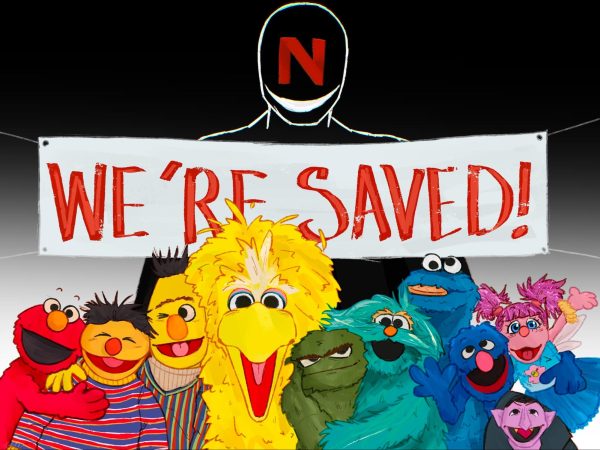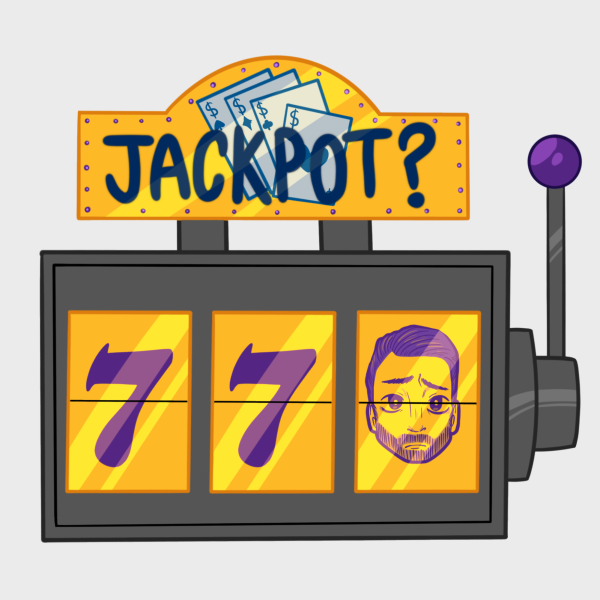Unstandardized, standardized test
Why a digitalized and changed SAT is a bad idea
Student throwing away their pencils and paper to take the online SAT.
College Board’s newest Hail Mary is stupid.
Starting in 2024, students will walk into the testing rooms and see glossy keyboards and the soft glow of a computer screen—with No. 2 pencils and paper nowhere in sight.
In its latest attempt to appeal to the masses, College Board decided to digitalize the SAT and change its whole format. From tests with questions that change as you take them to sections that don’t resemble long-standing practice exams, College Board has ‘revolutionized’ testing.
But this is just a dumb idea that makes absolutely no sense. Here are College Board’s newest changes and why they’re inarguably idiotic.
Change #1: Adaptive Tests
What this means is that the reading, writing and math sections are divided into two parts—modules. Test takers will answer the questions in the first module and the questions given in the second module depend on how well they performed in the first one.
This change doesn’t add up.
Adaptive tests just contradict the whole purpose of the SAT. The entire appeal of the test for colleges is that the SAT gives every single person who takes it the same questions. That at least gave the test an accurate representation of a person’s holistic aptitude.
But now with adaptive questions, the supposed “standardized” test isn’t standardized anymore.
This has many implications as with the new test format comes new game plans.
The SAT is based on a 1600-point scale with the two sections—Math and Reading/Writing—worth 800 each. But with each of these sections divided into modules, test strategy will have to be changed drastically.
It was once possible to get 1500 on the SAT while missing ten questions. Now it will matter where the questions are missed.
Early mistakes will have a larger impact on scores than the simple point deduction they do now. Under the adaptive system, you would not only lose a point for getting a question wrong in the first module but you’re also limited in how many points you can get in the second module because you won’t be able to attempt the test’s hardest questions.
That just seems like the test is throwing on extra, unneeded psychological challenges as the system may tempt you to turn a lot more time on weighted questions that might better be used elsewhere.
But as we haven’t seen the test yet, conclusive opinions about the magnitude of inconvenience to students can’t be formed.
Change #2: Online Tests
Taking tests on a computer is way harder than using the traditional pencil and paper. You have to manipulate the scrollbar, click a million times to cross out an answer, wait for the slow computer to process your action and find that sneaky little “next page” button that always seems to hide from you.
Most importantly, having to use a calculator on a screen is the most annoying task ever. From my experience, entering in large numbers is vexing and extremely slow. I once spent five whole minutes trying to type in a number that had four decimals, carefully clicking each digit one by one just to have to restart since I accidentally clicked a wrong numeral.
But I’m not just making petty complaints. A 2019 study found that students who took a test online lagged way behind the others who took an identical paper test. The reason why: unfamiliar format.
But going virtual isn’t all that bad: you get your test scores faster, and the length of the test is cut down from three hours to two. That’s always a good thing until you get to the reading/writing sections.
Change #3: Reading/Writing Sections
Beyond varying levels of difficulty through modules, the digital SAT will basically be nothing like the paper version. Now, the reading and writing portions will be combined into a single convoluted section. The new reading portion will have short passages (roughly 25-150 words) with one question per passage, whereas the old ones had long passages with multiple questions. Not much will change with the writing portion, but one good thing that will come out of all this is that—finally— the “No Change” option for grammar questions won’t be an answer choice anymore.
Other than that, I just don’t understand the reasons for the other changes.
With only one question per passage, the new SAT doesn’t test all your reading and comprehension skills equally. I could understand one passage about history and answer a question about summarization correctly, but I could also not have a clue about a science passage, leading me to answer the question about the author’s purpose wrong. Does that mean I’m bad at identifying the author’s purpose? Possibly. But if I was given the exact same question for the history passage I understood more, could I have answered correctly? I’d say yes.
Change #4 Math Section
The math section didn’t change as much, except now, a calculator will be allowed in both math sections. I don’t mind this change, but I worry about test score inflation.
The SAT is based on a 1600-point scale, with two sections—Math and Evidence-Based Reading and Writing—scored between 200 and 800. With half of the SAT becoming way easier, scores are bound to skyrocket. Higher and higher scores will probably be needed to get into your top college.
But only time will tell if these new policies will be good or bad for students.
Change #5: Test Prep
It’s just my luck that my year, the class of 2025, will be the guinea pigs. With new content, a new test format and a new scoring system, all the test prep we have undergone right now will be useless. Every test prep book, every practice exam and every course will have to be rewritten. I do feel bad for those who have already paid for SAT prep resources, such as TestMasters, as most of it now will be useless.
But hey, let’s not worry about them. What about us? How will we prepare? How will we get a good score? How will we do anything when nobody knows what it’s like, what to prep for or how it’s going to go?
That’s the thing.
When we take the test, we won’t know anything.
Your donation will support the student journalists of Bellaire High School. Your contribution will allow us to purchase equipment and cover our annual website hosting costs.







